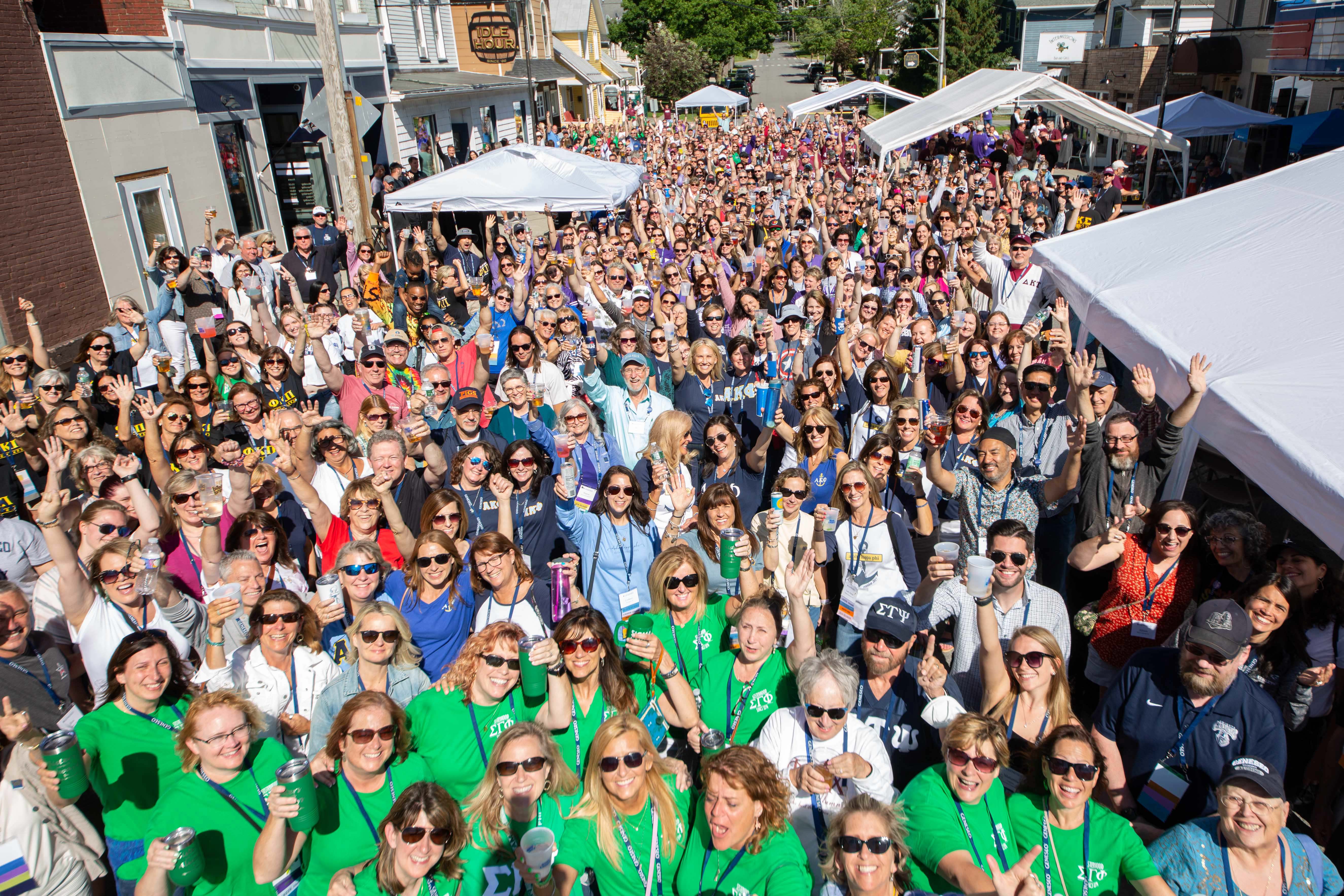Professional organizer Allison Zales ’04 shares the secrets of decluttering made easy.
By Allison Zales ’04
Without question, my purpose in life is to help others. My passion for being organized in my personal life also fit neatly into my career path.
As a professional organizer, I help others to improve their lives by being purposeful about what’s in it. I teach that clutter is merely the accumulation of delayed decisions. Through hands-on organizing support, I help my clients regain control of their space and take proven steps to replace clutter with clarity.
Spending so much time developing other people’s organizational skillsets, I started to wonder how it is that I seem inherently programmed to create order from chaos. All clues point to my two other dominant life themes: control and childhood.
As a spoiler alert, this story all plays out nicely. Still, my upbringing wasn’t ideal—unless one is on a mission to raise a future control freak. As a kid, I grew up in an environment where I felt I had little control over anything. At home, I had a mom and a dad who cared about me very much—so much so that they made every decision for me. My dad leaned into this idea the most. My choices always became his decisions. His decisions were always unpredictable.
What I later learned in class at Geneseo is that structure and routine are associated with positive outcomes in children. And trust and predictability are the framework for creating a nurturing environment. Enter: a new understanding of my childhood survival instinct. To self-nurture.
I did this by hyper-organizing every inch of what was in my control at the time—my bedroom. I would empty drawers, unload my entire closet, and refold and rehang every piece of clothing. I’d make a pile for anything that didn’t give off a good vibe—that stuff had to go. I cleared off surfaces, leaving only uplifting items on display and otherwise left my space clutter-free. After organizing sessions like this, I would immediately feel mentally lighter, awakened to productivity, and most importantly, back in control.

Allison Zales ’04 (Photo provided)
We all have situations in our lives where we feel hopelessly out of control. Many of my clients feel this way about their homes. Whenever I hear this, I offer wisdom from earlier years: Focus your mindset and effort on what you can control—your space and your things.
Each client is different, so I guide each person to make changes that work best for them. It can be easier than you think. I’ll help you get started:
Keeping any space organized…
Step 1: Define an area by designating a tidy “home,” or place, for everything that belongs there.
Step 2: Routinely return all items to their appropriate place when not in use.
For most people, these steps are easy to do with a manageable number of belongings. However, disorganization at home often comes from the reality that we simply own way too much stuff.
Downsizing and deciding what to let go…
Start downsizing by focusing on large category areas. Think: clothing, shoes, coats, books, gaming, office supplies, hobby, equipment, tools, crafts. Select one of these areas and stay there. Then, item by item, decide whether to keep it or let it go.
Paring down our belongings comes easier to some of us more than others. When my clients and I feel overwhelmed about what decision to make, we call my dad… Just kidding!
You can ask yourself these tried-and-true downsizing questions:
- Would I buy this today?
- Is this item my only option for its purpose?
- Does this item align with my current self and lifestyle?
These questions have been designed to help make the decision-making process easier by shedding light on the next course of action. When the negative answers pile up, most people feel comfortable in deciding to let go. Letting go is healthy and makes us feel good. It creates room in our physical space, our mind, and our spirit for even better things to come in.
Getting started…
An important key to completing any task is the ability to get started. Here are a few suggestions:
- Start in the area that will create the most new space. Taking this approach usually leads us into over-packed basements and storage rooms. Unused and excess items very quickly stack into large piles for trash and donation. By tackling our heaviest lift first, we’ve already gained the momentum and space needed for taking on future organizing projects!
- Start in the place that causes the most stress. For some of us, our stress source is consuming all our mental energy. Relieving our stressor can open the floodgates for progress!
- Start anywhere. This is the default answer for over-thinkers, feet-draggers and excuse-makers (said without the least bit of judgment from a control freak). The plan to begin anywhere resolves all the barriers. Organizing any space will be worth it!
Bonus Tip: The Order of Organizing Operations
Work from Left to Right, and Top Down. Working left to right helps focus our attention on what lies in front of us and then points us in the direction to go next. Working from top down limits movement to only what’s necessary. It’s also important that we stay in the project area. When we find items that belong elsewhere, we set them to the side and save trips outside of the room for when we are done. By using this method for movement, we are maximizing our physical and mental energy to see us through to our project’s end!
Taking even the smallest step toward becoming more organized offers great benefits. Personally speaking, being organized allows me to be me (inherently organized). Research suggests being organized and clutter-free can improve sleep and relationships, minimize stress, increase productivity, boost energy and self-confidence, and provide a host of other good things.
Allison Zales ’04 has helped hundreds of clients create more satisfying spaces in the Syracuse area, in person, and in virtual meetings anywhere in the world.










